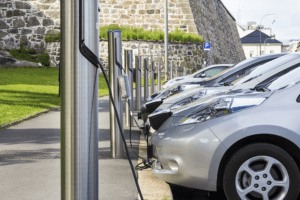As part of our series on preparing commercial buildings for a return to the workplace, we’ve seen how smart building technology can help you operate more efficiently and effectively under the ‘new normal’. In my last post, we looked at the steps needed to prepare a building’s HVAC system for the return of occupants. In this post we’ll look at how to sustain a healthy building over the longer term.
After using a set of best practices to make sure the building management system (BMS) is working properly, you can have the peace of mind that indoor air quality (IAQ) and thermal comfort have been optimized to enable occupants to begin returning to work. But the responsibility of the building owner and operator doesn’t stop there.

To sustain occupant well-being, building conditions should be continuously measured and BMS controls adjusted as necessary. You also need to take into account balancing IAQ and comfort against energy efficiency and costs.
Once again, the newest smart building technologies and services can help you simplify these requirements for healthy buildings. Let us see how.
1. Control and Monitor
Every aspect of building automation should be monitored and analyzed to ensure that a healthy environment is being maintained. For example, occupancy and CO2 levels should continue to be monitored, logged, and analyzed. Humidity should also be accurately tracked. If you don’t have this capability now, you should consider a room monitoring solution.
With increased outside air and humidity levels, it will be important that the building is able to maintain indoor temperature (in compliance with standards) for the comfort of occupants. Therefore, temperature should be monitored and logged in each room and zone – this may require additional sensors.
It is important to also maintain the correct flow of air from clean to less-clean. You should consider monitoring and trending of pressure and air flow rates, including room-level monitoring if there is a need for internal zone differential pressure.
In support of better predictive maintenance, pressure sensors can be used to monitor the pressure drop caused when filters need replacing. Indoor air quality should also be monitored. Dust can act as a vehicle for viruses that become aerosolized. PM2.5 or PM10 monitoring devices should be considered for monitoring whether levels of particulate are being adequately reduced. Volatile organic compounds (VOCs) can also have a negative impact on occupant health. IAQ monitoring systems can be used to monitor and log VOC levels.
Finally, occupancy levels will be important to monitor. This will help comply with guidelines set by local authorities, and to keep occupants safe. Simple tracking by access control systems may be enough, or it may be necessary to monitor different areas in a building, from meeting rooms and cubicles to communal areas, such as cafeterias and gyms. In this case, smart building management tools are available that can help monitor and manage occupancy. Facility managers will be alerted when the number of people exceeds a set threshold for a given area, while employees are informed of available ‘safe’ areas and meeting rooms on their mobile devices.
2. Use Continuous Commissioning and Fault Detection
Due to the requirement to enhance occupant well-being, the steps required – e.g. increased use of outside air, and higher-rated filters – may have a significant impact on building energy consumption. Ensuring all systems are running properly is critical for the sake of occupant health, but also for optimizing overall building performance and business resilience.
To maintain a healthy building as well as optimize energy efficiency, the health of HVAC assets should be monitored and faults detected quickly. For example, air handling unit should be monitored for proper operation of dampers, air temperature, air flow, fan speed, CO2 levels, and filter pressure. Zones should be monitored for proper humidity level, temperature, air flow, air pressure differentials, and CO2 levels.
By analyzing BMS and occupancy data, steps can be taken to minimize energy consumption. By having appropriate sensors in place, smart building analytic tools, and the support of expert services, you can achieve deep insights into the health and performance of your building. Armed with this knowledge, you can make the best decisions to proactively balance occupant well-being and efficiency.
Check with your regional Schneider Electric team on what government incentives may be available to help fund the changes you need to make. For example, the CARES Act in the US or other similar international programs may help pay for upgrades.
In my next post, we’ll have a detailed look at mobile apps that can help engage employees who are returning to the workplace as well as those who work remotely. Learn more about our connected EcoStruxure Building solutions, designed to help you effectively manage space utilization, communications, and create healthy buildings that operate efficiency during a return to the workplace.



